**Contains major plot spoilers for The Coming of Mr. Quin and The Harlequin Tea Set and a minor plot spoiler for The Chocolate Box.**
The Harlequinade Continues
It is fitting that Christie drew upon her favorite theatrical characters and grandmother’s figurines for her first Poirot short story. In quick succession, she would publish her first Harley Quin story, The Coming of Mr. Quin (originally titled The Passing of Mr. Quin), in 1924. The story begins at a New Year’s Eve party attended by Mr. Satterthwaite, who was:
Sixty-two--a little bent, dried-up man with a peering face oddly elflike, and an intense and inordinate interest in other people’s lives. All his life, so to speak, he had sat in the front row of the stalls watching various dramas of human nature unfold before him. His role had always been that of the onlooker. Only now, with old age holding him in its clutch, he found himself increasingly critical of the drama submitted to him. He demanded now something a little out of the common.
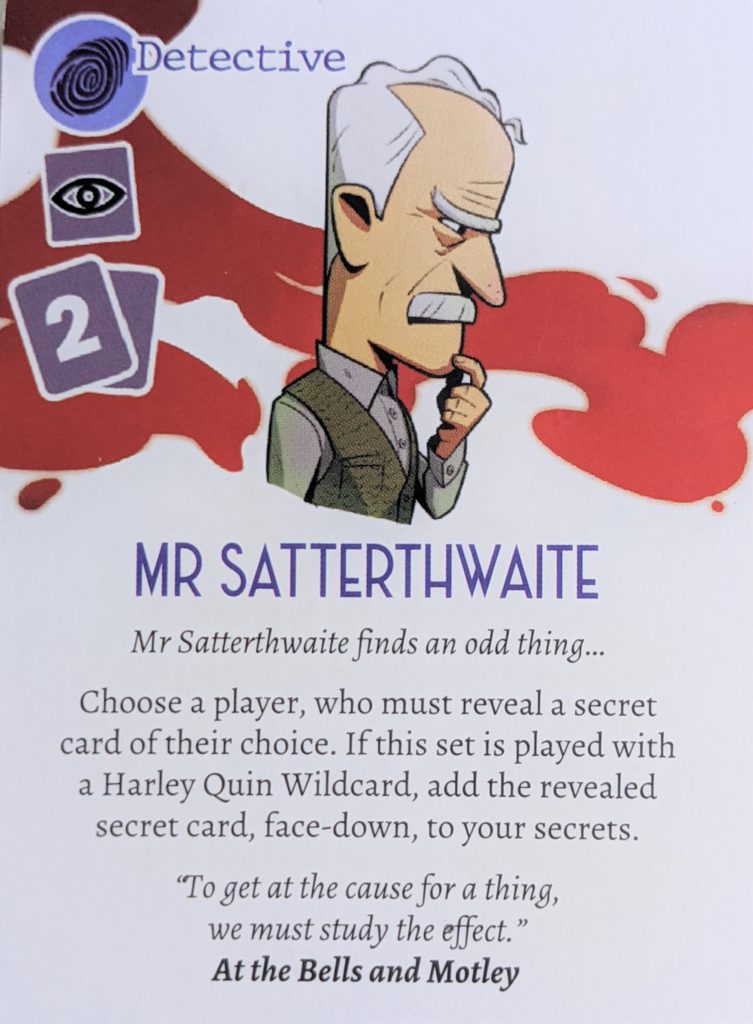
Satterthwaite is shortly to have his wish granted but first wonders about a couple who are attending the party, the Portals. Alex Portal was of “usual good sound English stock,” but his wife, Eleanor, was Australian, and Satterthwaite particularly wondered why she dyed her light hair black. He also noted that Alex seemed to be afraid of her, although it was obvious he loved her.
The other party attendees recount the story of Derek Capel, who formerly owned the house in which they are gathered. Capel suddenly shot himself one day without an apparent reason. While discussing the possibility of the house being haunted, three loud knocks are heard at the front door, ushering the arrival of Mr. Harley Quin:
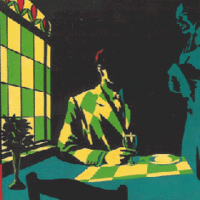
Framed in the doorway stood a man’s figure, tall and slender. To Mr. Satterthwaite, watching, he appeared by some curious effect of the stained glass above the door, to be dressed in every colour of the rainbow. Then, as he stepped forward, he showed himself to be a thin dark man dressed in motoring clothes.
Quin says his car has broken down and joins the party guests; “as he sat, some effect of the firelight threw a bar of shadow across his face which gave almost the impression of a mask.” Quin reveals that he had also met Derek Capel, and the group continue discussing his mysterious suicide. Mr. Satterthwaite notices that Eleanor Portal is now eavesdropping on the conversation and concludes that the entire evening was orchestrated by Mr. Quin: “he was at the heart of the mystery pulling the strings, making the puppets work.”
In due course, the full story of Capel’s death is recounted. He had announced his engagement but could not identify to whom, which led his companions to think that the woman was either currently or very recently married. Subsequently, the post arrived with newspapers and letters; Capel opened the newspaper, then went upstairs and shot himself. This had occurred around the time that the Appleton case was in the newspapers, wherein an “old curmudgeon” (with a young and very fair wife) had been poisoned with arsenic or strychnine. The wife was suspected, but there was not enough evidence to find her guilty at trial.
Mr. Quin guides the fellow men through the events. Capel was in love with Mrs. Appleton and had added strychnine to her husband’s decanter of port about a week before the elderly man’s death. Apparently an amateur toxicologist, Quin explains, “strychnine is not very soluble unless it is in the form of hydrochloride. The greater part of it, put into the port, would be taken in the last glass, perhaps a week after he left.” Reading in the newspaper that Appleton’s body was to be exhumed, Capel happens to see a police officer approaching the house from his window. The newspaper is a few days late because of a sizeable snowstorm, and Capel assumes that the officer has arrived to arrest him for murder, and he shoots himself. In actuality, the officer was returning a dog.

During his brief appearance at the party, Quin makes a special connection with Mr. Satterthwaite but departs once this solution is revealed. His parting words are:
I must recommend the Harlequinade to your attention. It is dying out nowadays--but it repays attention, I assure you. Its symbolism is a little difficult to follow--but the immortals are always immortal, you know.
After Quin leaves, Mr. Satterthwaite observes a scene between Mr. and Mrs. Portal. Alex asks her for forgiveness, now realizing the truth that she, as Mrs. Appleton, had not killed her husband. Harley Quin’s intercession on that evening had saved their marriage and her life, as she admits that was going to kill herself that night: “that man–that chance passerby, saved me.”
One of the locations where Mr. Satterthwaite happens to meet Harley Quin is a restaurant called Arlecchino, after the original Italian for “harlequin.”
The other stories in the collection follow a similar presentation, with Mr. Satterthwaite finding himself in a situation involving a pair of lovers in trouble–from a haunted window, mysterious disappearances, hidden identities, and death. The stories are not traditional Christie mysteries with an overt crime that requires solving from a brilliant detective but rather puzzling tales and circumstances that Harley Quin clarifies by aiding Mr. Satterthwaite in his ratiocination. The review in the New York Times Book Review stated, “To call the tales in this collection detective stories would be misleading. For all of them deal with mystery and some of them with crime, they are, nevertheless, more like fairy tales.”
Although the collection of stories was well-reviewed, true to his nature, Harley Quin essentially disappeared from Christie’s subsequent literary output. The character appeared in just two more stories, which were included in other collections: The Love Detectives and The Harlequin Tea Set. Nevertheless, Harley Quin is a unique and memorable character among all the characters created by Christie, and as he was beloved by her, these stories are highly recommended.
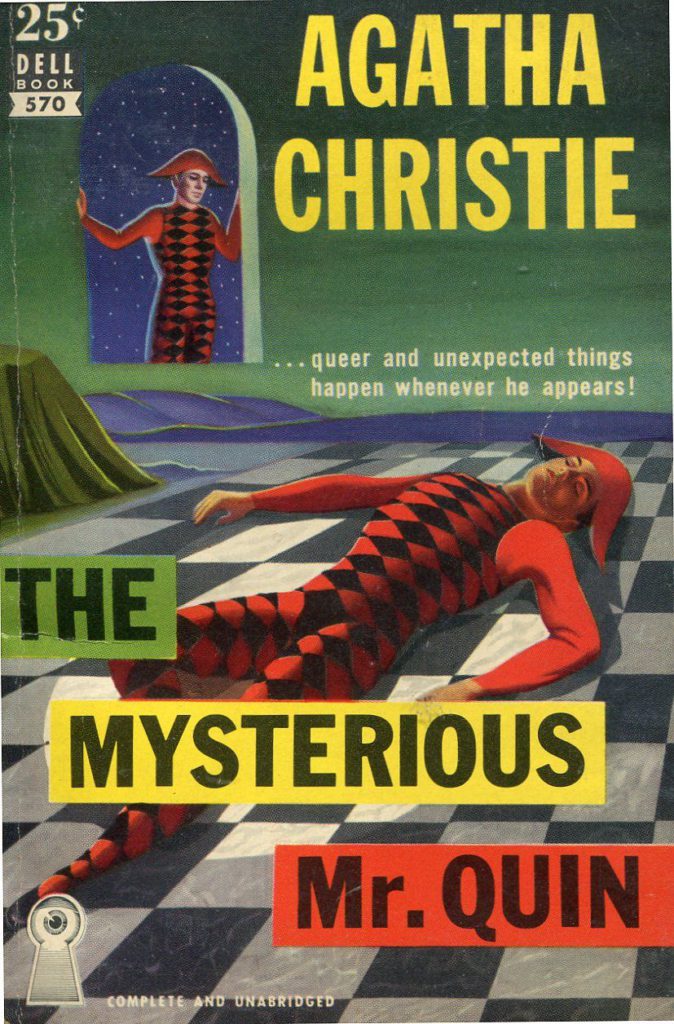
The Harlequin-inspired stories serve to almost bookend Agatha Christie’s career as the first Poirot (The Affair at the Victory Ball) and last ever (The Harlequin Tea Set) published short stories. The Passing of Mr. Quinn was the first British film adaptation of one of Christie’s works.
The Harlequin Tea Set
The final story to feature Harley Quin, The Harlequin Tea Set, was also the last story of Christie’s to be published, in 1971. In the story, Mr. Satterthwaite is waylaid by car troubles on his way to visit acquaintances in the country. He passes the time at The Harlequin Cafe and reflects on his old friend, Harley Quin,
It was the word “harlequin” of course which had remained fixed in Mr. Satterthwaite’s mind, although just far enough back in his mind so that it had been difficult to recall it. The gay colours. The harlequin colours. And he had thought, wondered, had the absurd but exciting idea that in some way here was a call to him. To him specially. Here, perhaps, eating a meal or purchasing cups and saucers might be his own old friend, Mr. Harley Quin. How many years was it since he had last seen Mr. Quin? A large number of years. Was it the day he had seen Mr. Quin walking away from him down a country lane, Lovers’ Lane they had called it? He had always expected to see Mr. Quin again, once a year at least. Possibly twice a year. But no. That had not happened.
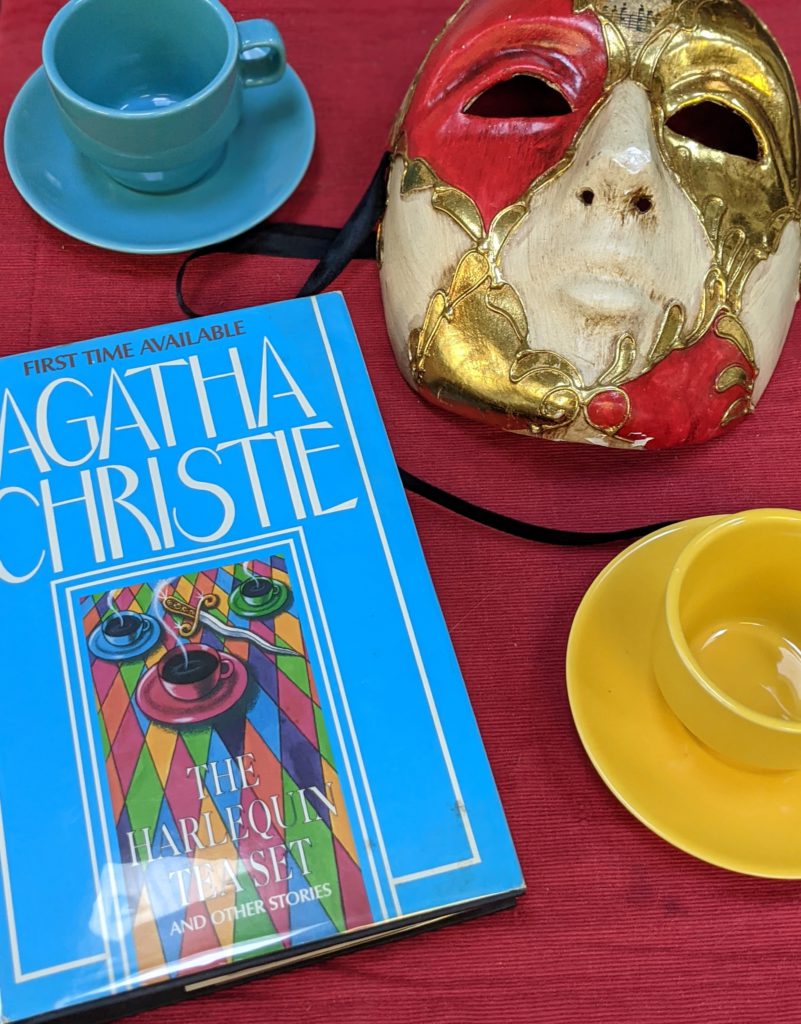
He admits to himself that he misses Mr. Quin and hopes that he shows up because when he did, it “was always an announcement that something was going to happen.” A very short time later, Mr. Quin indeed arrives, the sunlight creating a “festoon of colours” from his plain black suit. The two friends quickly become reacquainted, and Mr. Satterthwaite describes the family of Tom Addison, to whom he is on his way to visit.
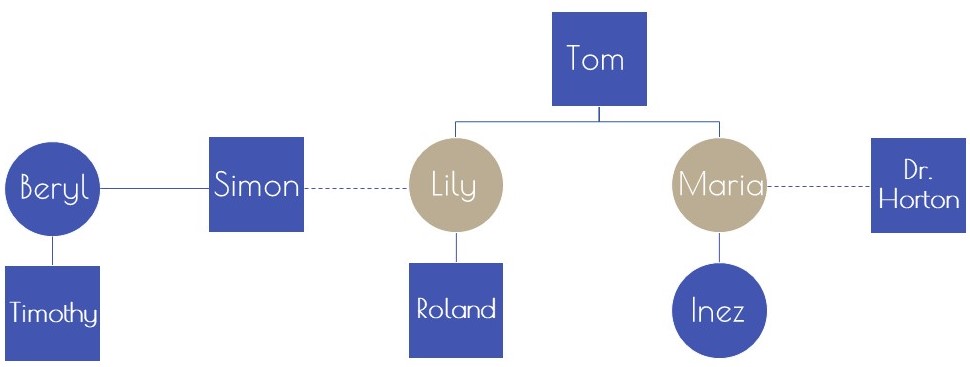
It has been many years since Satterthwaite had last seen his friend, and Tom’s family has changed in the intervening time. Tom and his late wife had two daughters: Lily, who was Satterthwaite’s goddaughter, and Maria, who died during childbirth. Lily had also died in a car accident, leaving behind a son, Roland. Roland’s father Simon remarried a woman named Beryl, who had a young son named Timothy. Timothy and Roland are now young men in their early 20s and live with their family in a country home named Doverton Kingsbourne, where Satterthwaite is traveling.
Coincidentally, Beryl arrives at The Harlequin Cafe to buy some of the harlequin teacups to replace some that had broken earlier in the day. Satterthwaite introduces himself and Harley Quin, who is also invited to join the family for tea, but he declines as he is “only passing by.” Quin departs just as Satterthwaite’s car is returned, providing an enigmatic word that he thinks will be of use to Satterthwaite: Daltonism.
Upon arriving at Doverton Kingsbourne, Satterthwaite is reminded of the meaning behind the word when he sees his old friend Tom Addison wearing one red and one green slipper, but the reader is provided no additional detail as to the condition. Satterthwaite sees Timothy and Roland for the first time in many years and remarks to himself that Timothy looks more like Lily than her biological son Roland. Each attendee of the gathering has a different color tea cup; Timothy has a red cup, while Roland has a yellow cup.

While he watches the family and especially Beryl, Satterthwaite increasingly feels as if something important is going to happen, as portended by his meeting Harley Quin earlier that day. Beryl brushes Timothy’s red cup off the table, shattering it, and she replaces it with a pale blue cup next to Tom’s pipe. When Timothy’s cousin Inez accuses him of drinking from her cup, since it is now a blue cup instead of a red one, Timothy claims it must be his cup because it is right where he left it by the pipe. He raises the cup to drink from it when suddenly the entire situation is made clear to Satterthwaite, who quickly tells Timothy not to drink from the cup.

Satterthwaite reveals that Daltonism refers to red-green colorblindness and that Timothy is afflicted by this condition, which therefore made him unable to discern between the two teacups. Satterthwaite also realizes Timothy has inherited his colorblindness from his grandfather Tom (with his mismatched slippers). He surmises that Beryl exchanged the identity of her son with Roland, the heir to Doverton Kingsbourne, when both boys were young in order to ensure her son would inherit Tom’s estate. Threatened with confrontation, Beryl flees.
Mr. Satterthwaite receives a note from Harley Quin, congratulating him on his success in preventing a murder, but the two friends are never to meet again in the fictional works of Agatha Christie.
Daltonism
Daltonism is another term for protanopia, which is colorblindness resulting from insensitivity to red light, causing confusion of greens, reds, and yellows. This pattern of colorblindness is caused by alterations in the proteins responsible for the discernment of light wavelengths due to gene mutations on the X chromosome. Because women have two X chromosomes, they are typically only carriers of the condition, and it is present in male relatives with one X chromosome. Women can be affected by colorblindness due to mutations in other genes not on the X chromosome, but this is very rare. It is also possible that a woman may inherit mutated X chromosomes from both parents (an affected father and a carrier mother), but this is also rare.
The name Daltonism was applied to this condition because the chemist John Dalton provided the first written account of the affliction suffered by him and his brother in 1798. The inheritance pattern of red-green colorblindness was identified in the late 1960s, and Agatha Christie incorporated this recent scientific discovery into one of her mysteries, as she had done throughout her career. Christie also used colorblindness as a clue in a Hercule Poirot short story, The Chocolate Box, published in 1924.
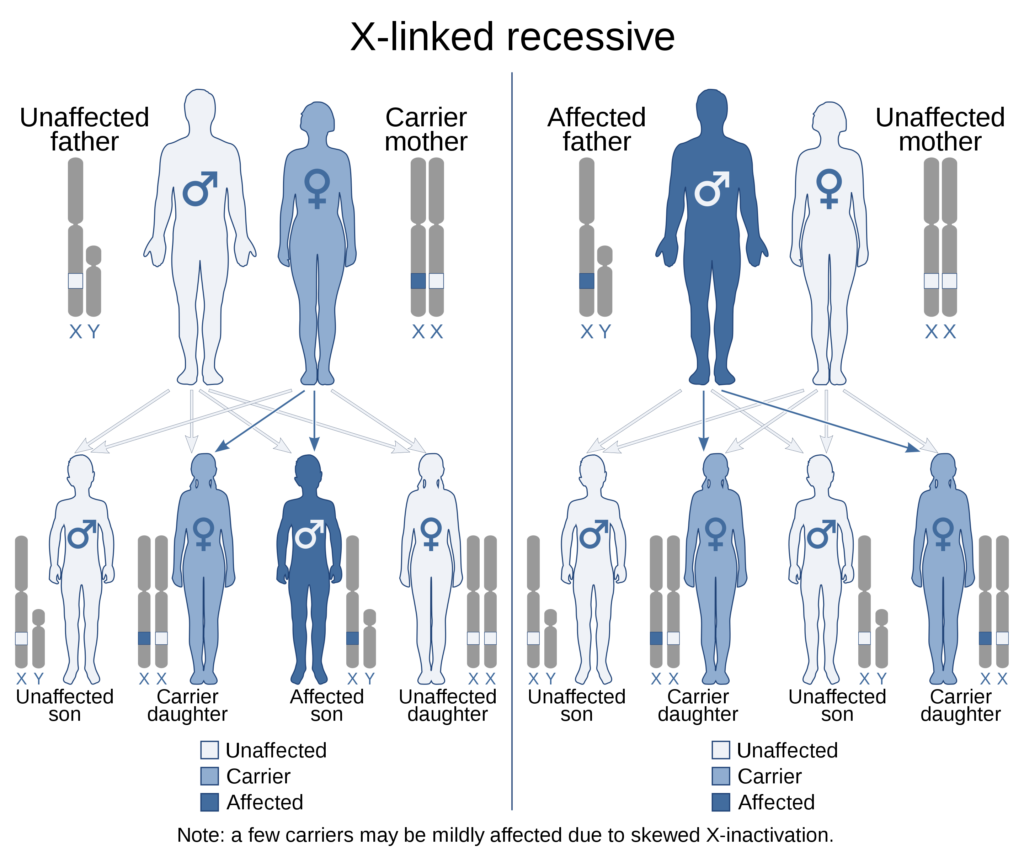
Harlequin Medical Disorders
While there are no known forensic science or criminology principles directly related to the Harlequinade, there are two rare but noteworthy skin disorders (and a third that is less uncommon) whose names are at least partially derived from the character of Harlequin.

Harlequin color change, or unilateral erythema, is a harmless condition observed in approximately 10% of newborn babies and occurs when half of the baby’s skin exhibits a red color with no change in the other half. The color change is well demarcated, as with a harlequin costume that is half red and half white. Scientists speculate that the condition results from a temporary imbalance of the blood vessels in the skin that presents in newborn babies because their hypothalamus is continuing to develop. The hypothalamus is the body’s homeostatic center, regulating body temperature and many other autonomic (or involuntary) functions.
Another minimally complicated condition — both from scientific and quality-of-life perspectives — is harlequin syndrome. Like the harlequin color change just described, harlequin syndrome produces unilateral flushing and sweating in the affected person; one-half of the body will appear red while the other half is unchanged. This is a relatively rare condition, and no definitive cause has been identified.
Based on case reports, it is hypothesized that the condition results from damage to nerve bundles in the head and neck, possibly due to trauma, autoimmune conditions, tumors, or strokes. Once these nerve bundles are damaged, their communication with half of the body is reduced or eliminated while they maintain normal communication with the other half. Consequently, in response to a stimulus such as increased body temperature, the half of the body with nervous communication intact will flush and sweat, and the other half of the body will remain unaffected.
Harlequin syndrome may be uncomfortable and embarrassing but is not life threatening, and many patients require no treatment. In extreme or complicated cases, such as those involving a tumor, surgery may be performed to remove the tumor. If the damaged nerve bundle can be identified, it can be removed via a surgical procedure called sympathectomy or treated with botulinum toxin. With these treatments, all signaling from the nerve bundles would be disrupted, so in response to an increase in body temperature, neither side of the body would flush or sweat.
Botulinum toxin (common brand name: Botox) is produced by Clostridium botulinum and is used medically to block nerve signalling for the treatment of wrinkles, excessive sweating, and migraine headaches. It also causes the foodborne illness, botulism, which can be fatal.
The other rare and much more severe medical condition with a name inspired by the Harlequinade is harlequin-type ichthyosis. This extremely rare genetic disease is almost always fatal, with most historical cases surviving no more than two days after birth. The condition is characterized by the hardening of the outer layer of the skin, the stratum corneum, which forms armor-like and diamond-shaped plates. Because the outer layer of skin is so thick and rigid, it distorts the facial features and forms red fissures in the skin between the hard plates. This appearance led to its appellation of “harlequin-type.”
“Ichthyosis” literally means “fish skin condition.”
In the United States, the incidence of harlequin-type ichthyosis is about 1 in 500,000 live births. The condition is inherited through an autosomal recessive pattern, which is similar to the X-linked recessive inheritance pattern of Daltonism described previously, so both parents need to have one affected copy of the gene responsible. Through familial studies, researchers have identified a mutation in the ABCA12 gene that results in the deadly skin disease.
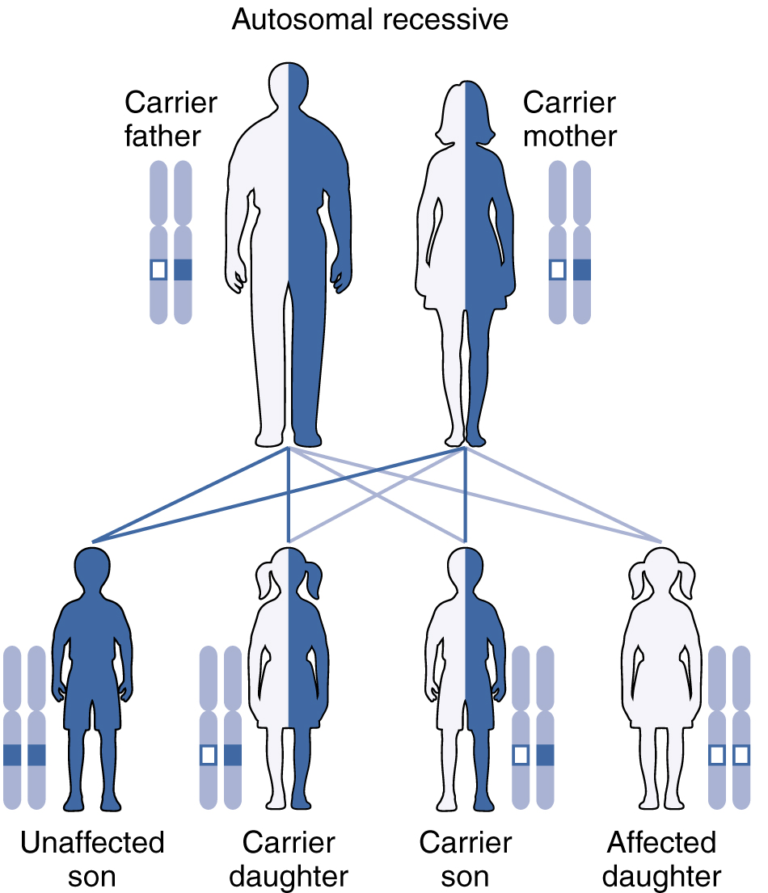
The ABCA12 protein is a member of the ATP-binding cassette (abbreviated ABC) transporter protein family; these channels are embedded in the phospholipid bilayer (or outer membrane) of cells and use energy from ATP (the molecule also involved with muscle contraction) to transport lipid (or fatty) molecules across the membrane. Because the lipids move from an area of lower concentration to an area of higher concentration (in other words, against a concentration gradient), this transport requires an input of energy from ATP. In the epidermal cells found in the skin, these lipid molecules are produced in organelles called lamellar granules. Organelles are membrane-bound areas within a cell that perform specialized functions; for example, the nucleus is the organelle that contains its genetic material.
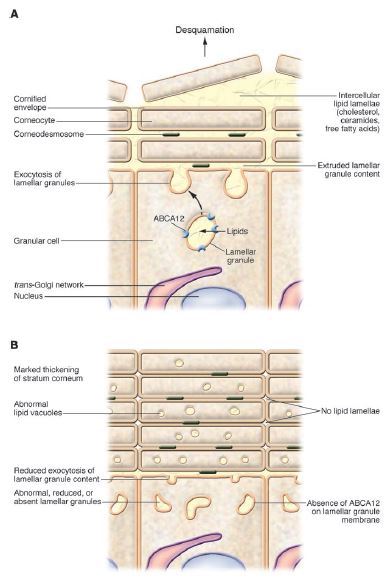
The molecules produced and exported by the lamellar granules are used in the stratum corneum, the outermost layer of the skin, to maintain the physical barrier of the skin as well as promote the natural sloughing off of skin cells and preservation of the layers of skin underneath. In harlequin-type ichthyosis, the genetic variations in the ABCA12 gene produce a transporter protein that is incomplete or misshapen and therefore the normal cellular functions of the stratum corneum are severely compromised. This is called a loss-of-function mutation.
The skin is an integral part of the body’s innate immune system because it provides a powerful physical barrier to insults from pathogens like bacteria and viruses, environmental contamination, and chemical effects. In any condition where the skin’s normal function is impaired, the individual is at a higher risk of infection. In harlequin-type ichthyosis, the fissuring of skin between the hard plates can allow for invasion by bacteria and viruses, leading to systemic infections that can be deadly. There is also some evidence that the production of immune factors within the lamellar granules is impaired, further compromising the immune system.
Additionally, the physical constriction resulting from the skin’s rigidity leads to difficulties with feeding, as an infant would not be able to move her lips properly to suckle, and with breathing because the skin around the chest is too tight to allow for adequate inhalation and exhalation. Infants with this condition are immediately treated in the neonatal intensive care unit to support feeding and breathing and prevent infection.
Harlequin-type ichthyosis is primarily treated with retinoids, which are vitamin A derivatives that promote the sloughing off of the hardened skin scales and also reduce the formation of new scales. The skin barrier is supported through applying lotions and emollients, especially those with small amounts of salt, urea, or glycerol. Often, the hardened scales on the fingers need to be removed surgically to prevent death of the tissue from constricted blood flow. Antibiotics are used to prevent or treat bacterial infections. With modern intensive treatment, babies born with this once-fatal condition can survive to early adulthood. Because this disease is so rare and treatments continue to improve, it is not yet known how much survival has increased, but the future holds promise for individuals with harlequin-type ichthyosis.
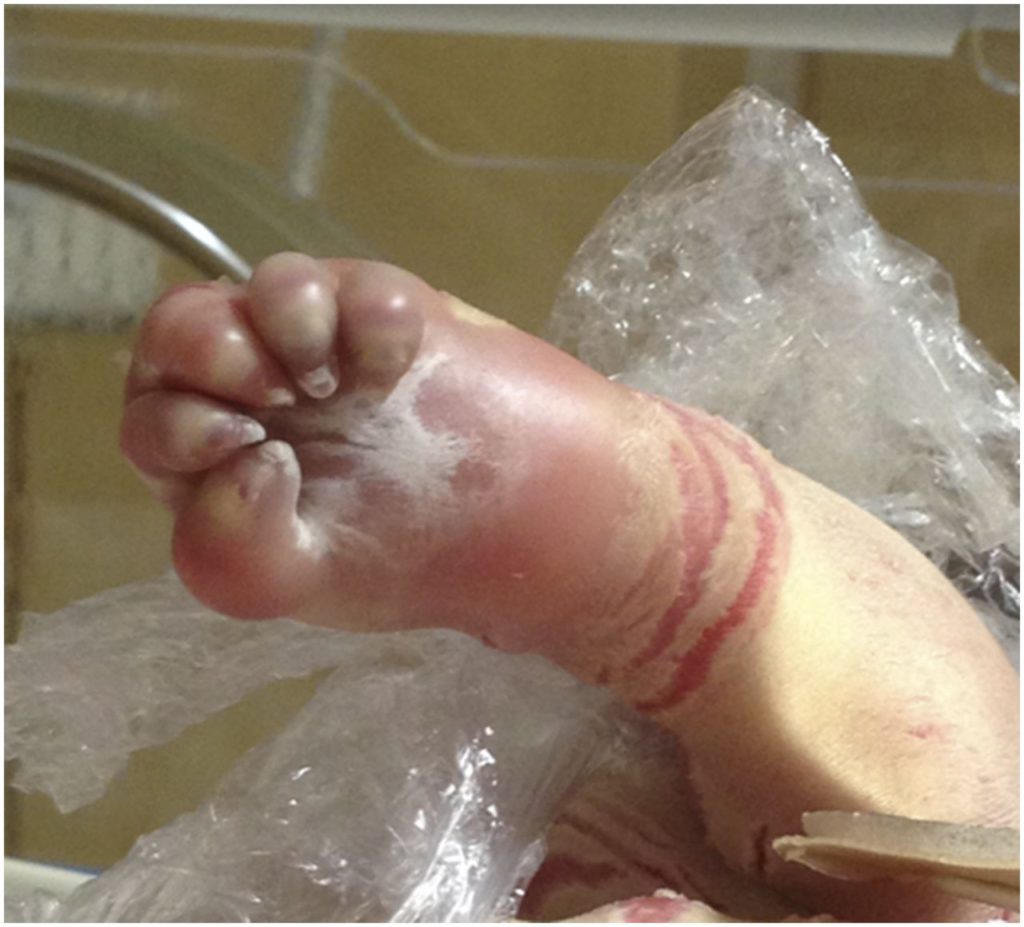
Repaying Attention
The naming of these medical conditions demonstrates the continued prevalence of the character of Harlequin in Western society. Of course, this author would be remiss if they did not mention the Detective Comics character also named Harley Quinn (with 2 n’s), created by Paul Dini and Bruce Timm as a female sidekick to the Joker. Although she has no relation to the work of Agatha Christie, the author would likely be pleased that the “Happy go lucky” Harlequin remains relevant for a new generation.